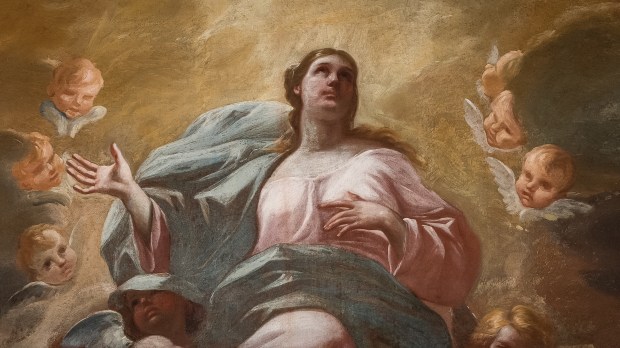Devotional life in Malta has always given special prominence to the Assumption of Our Lady. Indeed, it is the title by which the Blessed Virgin Mary is the patroness of the Islands. In Malta, she is known as Santa Marija Assunta (the Assumption of St. Mary), or just Santa Marija. The Assumption has always been the most popular feast and fount of widespread devotion.
Its early origins, however, are difficult to establish. While the Assumption into Heaven of Mary was only declared a Dogma of the Catholic Faith by Pope Pius XII on November 1, 1950, the devotion from apostolic times enjoyed considerable prominence in Christian tradition both in Eastern and in Western Christendom and has been for many centuries commemorated on August 15.
In the early times of Christianity, especially in the East, the devotion was to the Virgin’s Dormition – as a premise of her imminent glorification.
Some churches dedicated to the Assumption were already very ancient when Mgr. Pietro Dusina came on his apostolic visit to Malta in 1575. By the year 1800, Malta had 92 dedicated churches and 22 altars. Also, it was an age-old tradition to have more than one altar for the same title. But how many of these numerous medieval churches and chapels survived? Not many, since most were neglected and were very likely profaned canonically. As centuries passed by, about 50 churches were lost, and these do not include those whose title was changed.
Among the lost chapels is that of Santa Marija Assunta on Filfla (an islet of just 0.023sq mi, 2.8 miles south of Malta); while among the survivors, there is the Santa Marija Chapel of Kemmuna, which has troglodytic origins, and is already mentioned in documents dating back to 1274.
So, for centuries, an Assumption chapel was literally found in every corner of the Maltese archipelago. Notwithstanding changes and transitions, today, the Assunta is still the Patroness of the people of the Maltese Islands and resides deep down in their hearts. Indeed, we have today nine parishes in Malta (Attard, Birkirkara, Dingli, Gudja, Għaxaq, Mġarr, Mosta, Mqabba, and Qrendi) and two in Gozo (Victoria and Żebbuġ) whose main feast is Santa Marija Assunta – celebrated August 15 or a close date. Both the ancient National Marian Shrine of Gozo, the Madonna Ta’ Pinu Sanctuary, and the Cathedral of Gozo, in Victoria, are dedicated to the Assumption.
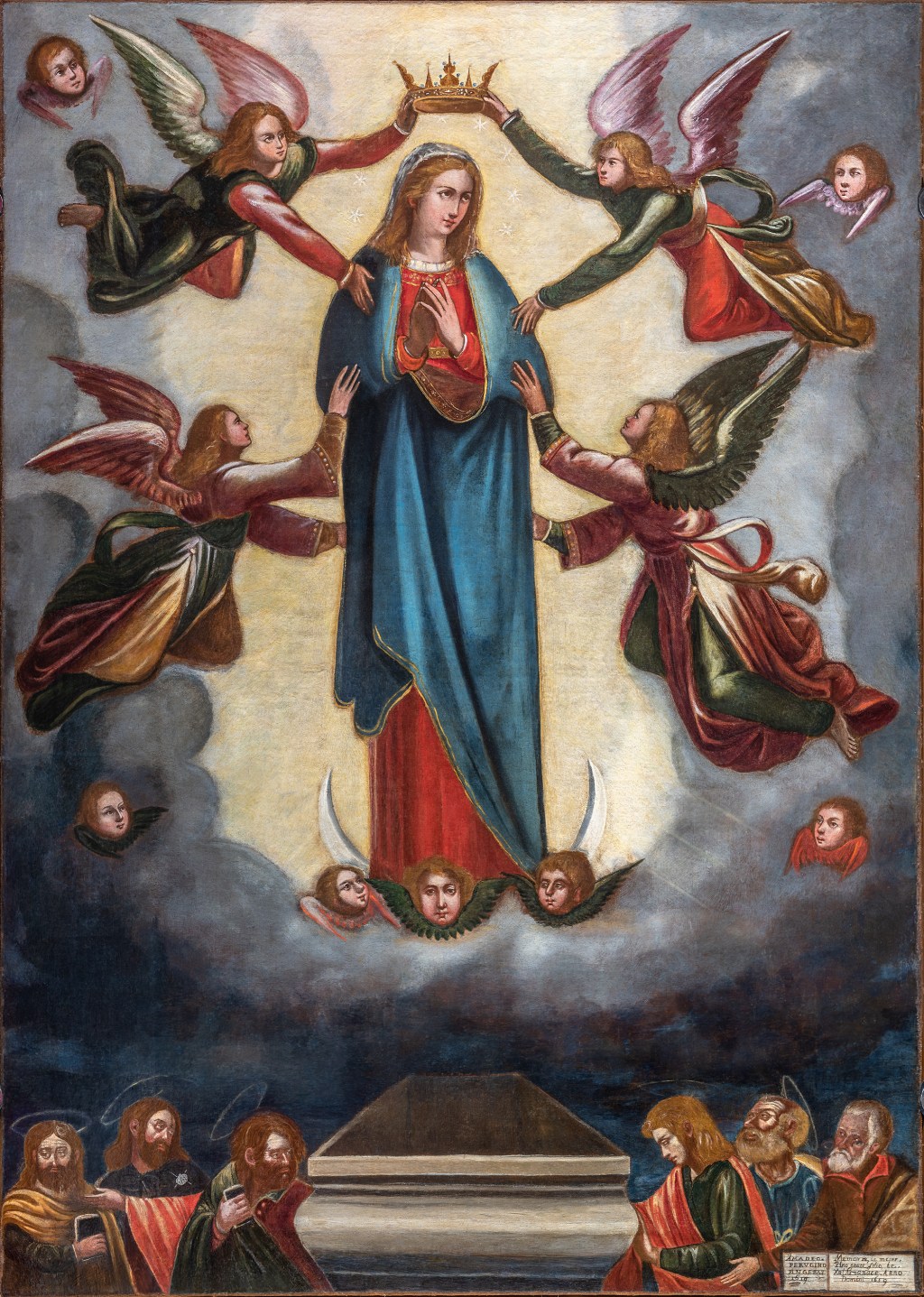
A centuries-old tradition recorded by the Gozitan historian De Soldanis, in the mid-18th century, relates how the Gozitans, soon after the shipwreck of St. Paul in Malta, dedicated their principal Roman pagan temple to the Blessed Virgin. The photo above shows the titular painting of the Madonna Ta’ Pinu National Shrine after restoration and conservation works, by Atelier del Restauro, bringing it to its original glory.
Siġġiewi – A fusion of hamlets
Siġġiewi (Città Ferdinand) is a very old village. It was already on the map in the 14th century. The meaning of the word “Siġġiewi” is uncertain. Some say that the place was named after the Sageyos, a rich family who had large estates in the area. Others argue that the Semitic roots of the word mean “prosperous” or “calm.”
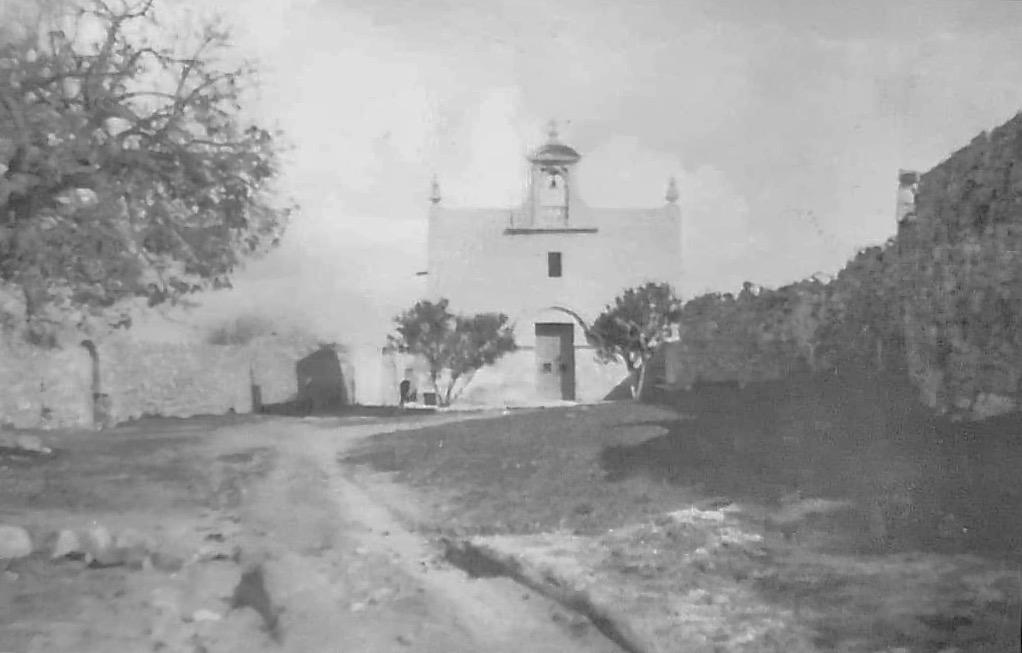
The motto of Siġġiewi is “Labore et Virtute” (With Work and Virtue). Before the arrival of the Order of St. John the Baptist in 1530, there were other thriving hamlets in the vicinity, namely, Ħal Xluq, Ħal Kbir, Ħal Niklusi and Ħal Qdieri, which were all absorbed in Siġġiewi. In 1765 life in Ħal Xluq seems to have come to a standstill since no more new baptisms were registered in the parochial archives of Siġġiewi. Today, only their secluded chapels remind us of their former existence.
The village is situated on a plateau in the southwestern part of Malta, a few kilometres away from Mdina, and 10 kilometres away from Valletta. In 1797, after a formal request by Don Salvatore Curso, on behalf of his parishioners, Grand Master Ferdinand Von Hompesch instituted the village as a city, honouring it with his name — “Città Ferdinand.”
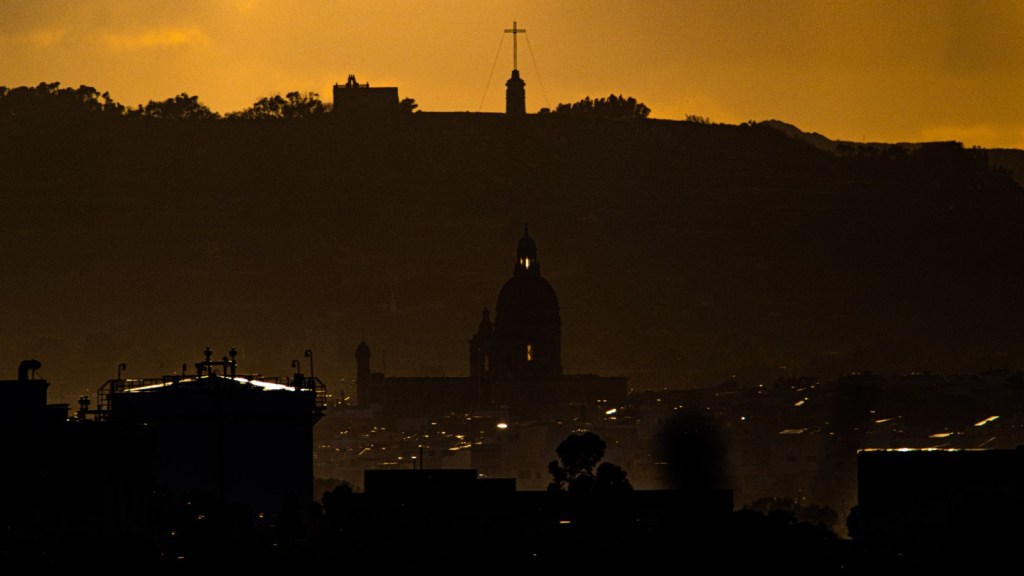
Siġġiewi was established as a parish in 1436 by Bishop Senatore De Mello, and construction of the church dedicated to St. Nicholas commenced soon after. In the same year De Mello had commissioned the Rollo, an inventory of parishes in Malta. This church was built near another much older one dedicated to the Visitation of the Blessed Virgin Mary. After some time, due to the need of a larger building, Our Lady’s church was merged with that of San Nicola. Over the years, fissures appeared in the ceiling of the old church, and in 1676 the people of Siġġiewi gathered on the parvis and decided to build a new parish church in a central part of the village. Most of the stones of the old church were used for the new church.
The imposing Baroque parish church, also dedicated to St. Nicholas, was erected by the hardworking villagers who also raised the necessary funds. As soon as the new parish church was completed, in 1693, the bishop ordered that the roof of the old church be demolished and that a high fence be built around it to prevent any criminals from finding refuge in it. In 2007 the site underwent restoration and conservation works to preserve what was left of this chapel.
The Assumption of Ħal Xluq
In Siġġiewi, we also find a very old chapel, dedicated to the Assumption of Our Lady. This church is located on the road that leads from Siġġiewi to Qrendi, where the hamlet of Ħal Xluq once was. In the report of Monsignor Pietru Dusina’s Apostolic visit in 1575, it is recorded that in the four hamlets that made up today’s Siġġiewi, no less than 46 churches endured, six of which were in Ħal Xluq. The main church was that of the Assumption (Santa Marija). In fact, it was precisely in this church where babies were baptized, even though the locality’s parish church was the church dedicated to St. Nicholas, as it still is today. It is not known when exactly this church was first built, but it definitely goes back to medieval times.
During his visit, Dusina desecrated many churches, including this one. According to his report it was in a disastrous state and could not be used to celebrate Holy Masses. After desecration, the church was completely abandoned, and its structural integrity went in ruins. But in 1583, Ġan Pawl Buttigieg, father of Rev. Stiefnu Buttigieg, rebuilt it, endowing it with everything, including a titular painting. He also donated the rent of a small field for the necessary expenses to celebrate Mass and light the sanctuary lamp on the feast day of Santa Marija. In 1596, Rev. Buttigieg became the rector of this church and a few years later he also became the chaplain of the parish of St. Nicholas. In 1615 a certain Anton Dalli had left two fields whose proceeds were to be used for the church’s needs.
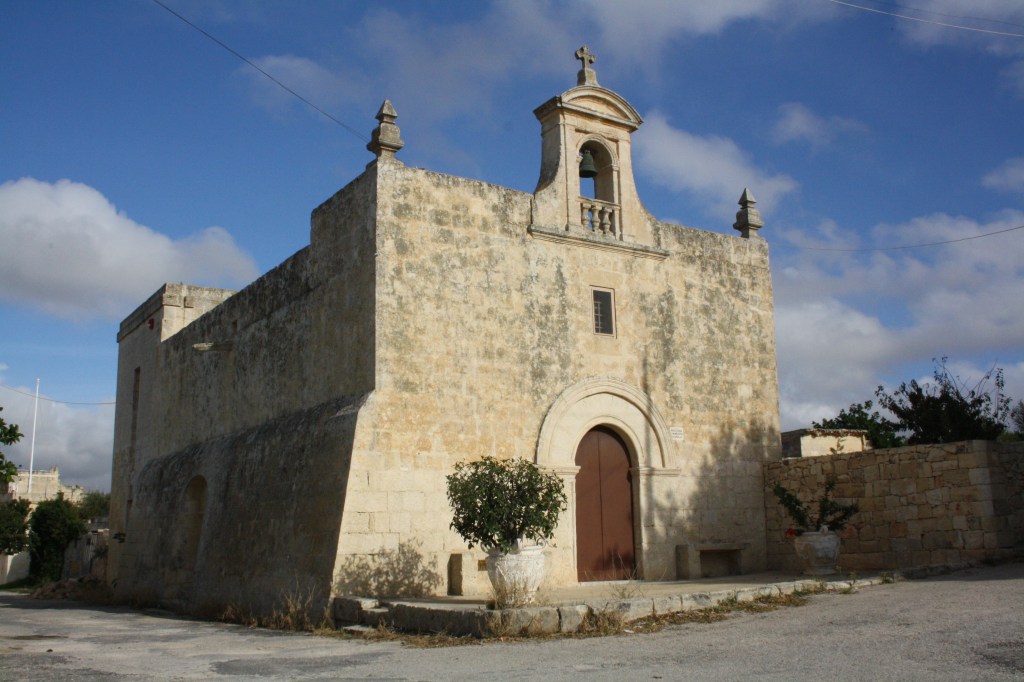
The locals loved this church, cared for it, and kept it in a very good condition. Indeed, during his pastoral visit of 1680, Bishop Molina had desecrated several churches, even in Siġġiewi, but when it came to St. Mary of Ħal Xluq, he pointed out that it was in a good state. In fact, he ordered that fund-raising enterprises dedicated to the desecrated churches were to be transferred to the church of St. Mary of Ħal Xluq.
This church is a small, beautiful, and ancient jewel. The rounded frame on the main door, which has survived various alterations carried out on the façade, reflects the antiquity of the church. In fact, similar artefacts are seen in other medieval churches, such as the church of St. Basil in Mqabba. The only source of light inside the church is a rectangular window, and another door on the left side. The large belfry, which still houses the original bell, was a later addition to the edifice. Other evidence which points at the antiquity of the church is its flat ceiling, which rests on pointed arches descending all the way to the ground.
The titular painting of the church depicts the Blessed Virgin Mary ascending to Heaven. The painting is in a stone perspective with pillars supporting a segmental pediment. On the right side of the titular there is another beautiful painting of Christ before Pontius Pilate. Both paintings are attributed to students from the school of Francesco Zahra. On the left side of the altarpiece, one finds a small painting depicting Christ carrying the Cross. In the church we also find statues of St. Rocco and St. Rita, while the sacristy houses a painting of Our Lady of the Rosary.
In the past, a festival was celebrated in this church on the feast day of the Assumption. Vespers were sung, and the chaplain of Siġġiewi celebrated Mass. A curious custom was that in the evening, the Mass commemorated St. Rocco, the protector from plagues. It seems that in this village there was a fervent devotion to this saint from Montpelier, quite common in Malta. In fact, the church still houses a stone statue dedicated to him.
However, today the titular feast is celebrated every August on the first Sunday after the 15th, where you will get to see not only the church but also a charming little festa with street food and band! After the morning holy Mass, the church’s curator still gives out a cup of coffee with some biscuits to all those present to keep alive this centuries-old tradition.
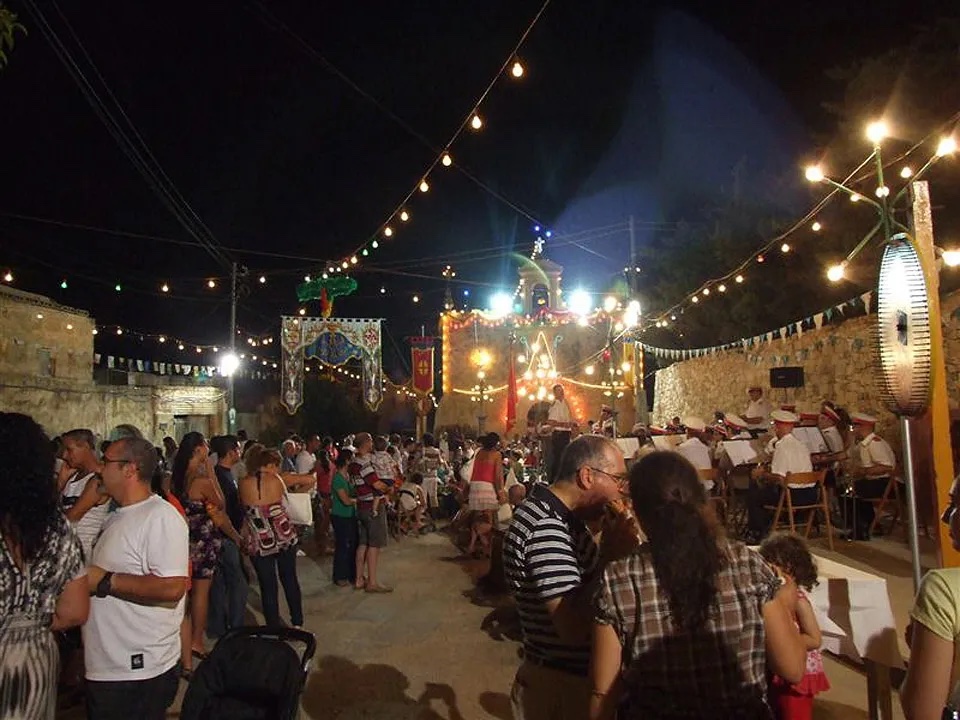
Recently, the church underwent some restoration and conservation works. For instance, in 2015, its old organ was in bad condition, “only good for firewood” according to some. But the Patrimonju SiġġiewiFoundation had a different idea. Engineer Robert Buhagiar, an organ expert, was commissioned to restore and bring it to life again. This organ dates to the 17th century – an “ottavino” organ, since it is considered a miniature organ, having barrels shorter than usual, hence playing notes an octave above normal. Extensive repairs and restoration were carried out on the outer wooden box, the bellows, the keyboard, the pedals, the mechanism as well as on the whistles. Only a few examples of such instruments are in working condition; so these conservation and restoration initiatives save these artistic gems, and their memories, from being lost forever. Today ottavino is singing again, as it did hundreds of years ago.
In the 19th century a stone statue of the Assumpta, directly facing the church of Ħal Xluq, was placed on a high pedestal on the road leading to the neighbouring village of Qrendi (whose parish church is also dedicated to the Assumption of Our Lady).
The Assumption in the heart of Siġġiewi
Strong devotion to the Assumption in Siġġiewi is not limited to filial churches, but is also evident in the parish, even though it is dedicated to St. Nicholas, and the town in general throughout the centuries. A superb titular of a side altar, with tangible influence from the Maestro Calabrese, Mattia Preti, is a witness to this centuries-old devotion.
The altarpiece was definitely created by an artist who was familiar to the Maestro’s bottega, though not necessarily forming part of it. This does not exclude some kind of involvement by Preti. Indeed, his charisma is mostly felt in the realistic way the heads of the incredulous apostles are depicted. Corresponding to Preti’s style, the apostles’ faces are not flawless, and they have bald heads. Also, one of the apostles is standing at the back and is shielding his eyes as if he is protecting them from the radiance of the Blessed Virgin Mary, which is very similar to an altarpiece Preti created for the Luqa parish.
A charming feature is the posture of the Madonna’s right foot, as it seems that the artist wanted to show that she is really floating above the sepulchre. Notwithstanding this, the artist’s identity is still a mystery. Nothing solid was discovered despite thorough investigation and research. No tangible evidence came out from neither the Siġġiewi parish nor the Curia archives.
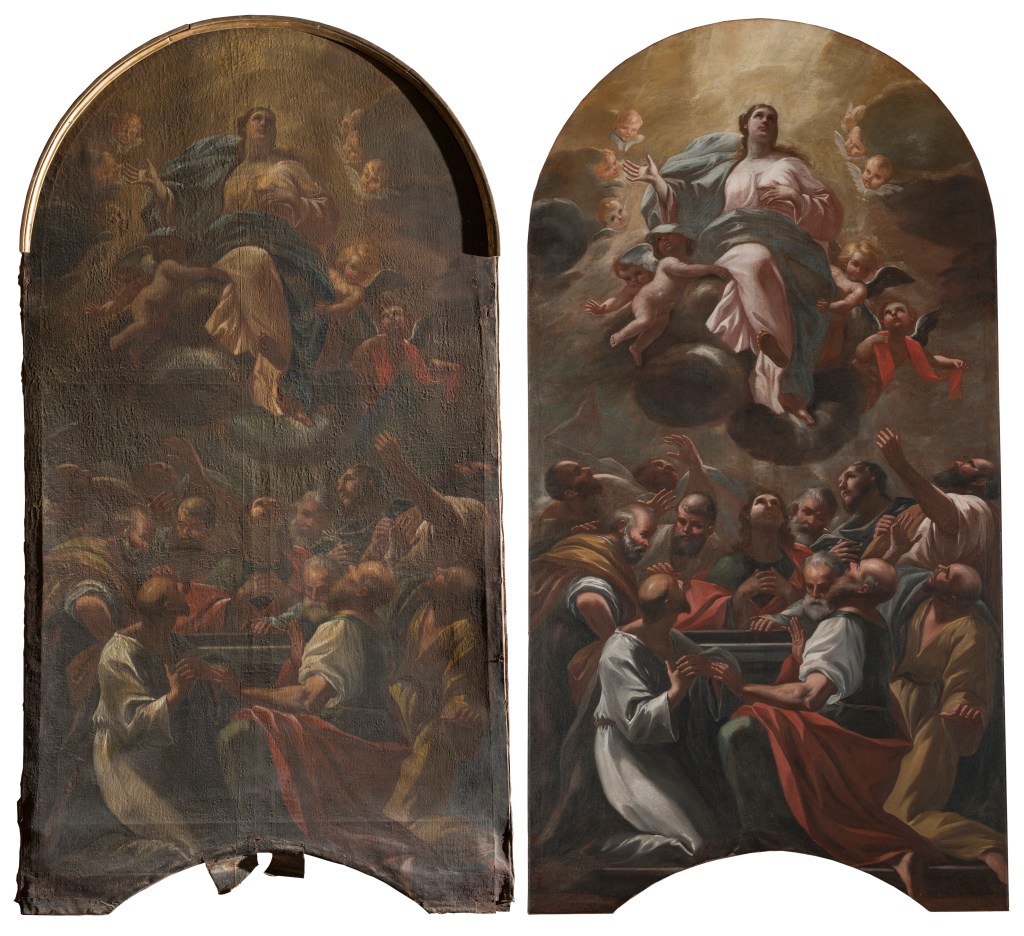
The painting’s origin is a problem too, but circumstantial evidence directs us to a medieval church, also dedicated to the Assumption — Santa Marija ta’ Ħaramija. From documents related to Apostolic Visits, the Assumption painting must, at least, date to the last decade of the 17th century, which would coincide with Preti’s last decade, when his influence in the Maltese artistic environment was rock-solid. So probably, the artist was either Preti’s collaborator, or an artist working behind the scenes, though not employed in his bottega. This said, the painting surely reflects an extremely talented artist, even reaching the master’s magnificence.
The painting underwent conservation and restoration works in 2021 by Amy Sciberras of Fine Arts Restoration. Before restoration, all the details had almost disappeared. The shades, brushstrokes, and the artistic touches were totally concealed. Thick layers of old varnishes and overpaints weren’t the only culprits, for the painting was also the victim of a multitude of cracks covering the entire surface, almost pushing the masterpiece to obliteration. However, the capable hands of Amy Sciberras were commissioned just in time and saved the day.
Anyone visiting the parish can now stand in awe before the reborn painting. Indeed, Sciberras and her team gave back the solemnity this devotional painting of the Assumption deserves. It is also noteworthy that these works have given the opportunity to scholars and historians to study this resplendent work of art.
~
I would like to thank unreservedly: Nikol Bezzina, a local expert from Siġġiewi, for reviewing this article, and for furnishing me with information about the chapel of the Assumption of Ħal Xluq; Amy Sciberras for providing detailed information about the painting of the Assumption, and its restoration, in the Siggiewi parish church; Caroline and Roderick Busuttil of Kappelli Maltin for their invaluable work on chapels dotting the Maltese archipelago, and for their unceasing assistance; and my father for patiently reviewing my work.
References
Bezzina, N. ‘Is-Siġġiewi’ Parish magazine, Vol. 45, Issue no. 1, June 2023.
Borg V. The Assumption of the Virgin Mary; Various Marian Devotions; and Bezzina J., The Veneration of Our Lady in Gozo. Marian Devotions in the Islands of St Paul – The Historical Society. Malta.1983. Accessed 2019 – 2020
Busuttil R. Santa Marija ta’ Ħal Xluq – Siġġiewi. Kappelli Maltin (Maltese Chapels). Accessed July 2023
Fiorini S. Santa Marija fit-Tradizzjoni Reliġjuża Maltija (Saint Mary in Maltese Religious Tradition). Special edition of “L-Istandard”. July / August 1987.
Marie de Nazareth – A Gesù Attraverso Maria. Encyclopédie Mariale. Il Transitus Virginis o Dormitio Mariae. Accessed October / November 2020
Munificentissimus Deus – Defining the Dogma of the Assumption. Apostolic Constitution of Pope Pius XII. November 1, 1950. Accessed October / November 2020
Pisani B. Il-fdalijiet tal-knisja l-qadima tas-Siġġiewi (The remains of the old church of Siġġiewi). TVM, June 15, 2014
Restoration Work at Siġġiewi old parish church site. The Malta Independent, 3rd February 2007
Saliba P. C. The conservation project and archaeological excavation of the old Parish Church at Siġġiewi – an intermediate report. Malta Archaeological Review, Issue 8 2006 / 2007 [from the University of Malta website]
Sciberras A. and Aquilina N. The Assumption of the Virgin at Siġġiewi parish church. Times of Malta, December 26, 2021
See the Holy Land. Tomb of Mary.
Shoemaker S. The Cult of the Virgin in the Fourth Century: A Fresh Look at Some Old and New Sources. Origins of the Cult of the Virgin Mary. London. 2008
